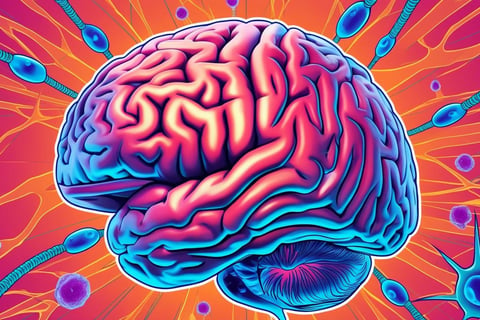Exploring the Many Levels of the Mind: A Deep Dive into Consciousness
MINDBLOG
3/14/20254 min read


Click Here for Mindfulness Meditation course
Click Here for other courses
Introduction to the Mind's Architecture
The architecture of the mind is a complex and multi-layered construct that has intrigued philosophers, psychologists, and neuroscientists alike. At its core, the mind can be categorized into three primary levels: the conscious mind, the subconscious mind, and the unconscious mind. This classification, although simplified, serves as a foundation for understanding the intricate workings of human thought and behavior.
The conscious mind encompasses all the thoughts and experiences that an individual is currently aware of. It is the realm of active reasoning, decision-making, and immediate perception. This level of the mind deals with present awareness, where individuals engage with their surrounding environment and make choices based on that engagement. In contrast, the subconscious mind stores memories and experiences that are not presently in focus but can be readily accessed. It plays a vital role in influencing emotions, habits, and instincts, often guiding behavior without conscious thought.
Deepest of all is the unconscious mind, which harbors the thoughts, feelings, and desires that remain hidden from conscious awareness. These elements may include repressed memories and unresolved conflicts that shape one's personality and influence behavior. While they are not readily accessible for rational deliberation, their impact can manifest in dreams, slips of the tongue, or emotional reactions. Understanding this architecture is crucial for unraveling the complexities of human consciousness.
This blog post aims to explore each of these levels of the mind in detail, delving into their specific functions and significance. By examining various psychological theories and philosophical perspectives on the mind, we hope to provide a comprehensive overview of this fascinating subject. Through this exploration, readers will gain a deeper appreciation for the architecture of the mind and its implications for understanding human behavior and experiences.
The Conscious Mind: Awareness and Focus
The conscious mind represents a crucial aspect of human cognition, serving as the focal point for awareness, perception, and decision-making. It is the level of the mind where active thoughts occur, allowing individuals to engage with their environment meaningfully. Within this realm, people are capable of processing information, analyzing situations, and reflecting on their actions, which is fundamental for effective problem-solving. The conscious mind enables the evaluation of choices, encouraging critical thinking and informed decisions that shape daily experiences.
This aspect of consciousness is instrumental in navigating complex social situations and responding to challenges. By maintaining focus, individuals can filter distractions, enabling them to prioritize tasks and engage fully with their immediate surroundings. This concentration can lead to enhanced learning and retention of information, thereby contributing to personal and professional growth. Through self-reflection, the conscious mind allows individuals to assess their values, beliefs, and motives, promoting a deeper understanding of themselves and their actions.
The Subconscious Mind: The Storehouse of Memories
The subconscious mind serves as a vast repository that houses memories, beliefs, and learned information accumulated throughout a person's life. Unlike the conscious mind, which is responsible for active thinking and decision-making, the subconscious operates in the background, influencing behavior, emotions, and automatic responses without an individual's conscious awareness. This intricate system plays a significant role in shaping a person's identity and perception of reality, as it filters experiences and interprets them based on deeply embedded beliefs.
One of the primary ways to access the subconscious mind is through techniques such as hypnosis and meditation. Hypnosis facilitates a relaxed state, allowing an individual to tap into their subconscious, potentially uncovering repressed memories or insights that may otherwise remain hidden. Similarly, meditation promotes mindfulness, increasing awareness and enabling a deeper connection with one's inner self. Through these practices, individuals may uncover patterns or beliefs that govern their behavior, leading to greater self-awareness and personal growth.
Moreover, the subconscious mind is intimately linked with creativity and intuition. Many artists and innovators have described experiencing bursts of inspiration that seem to arise from nowhere, attributed to the subconscious mind synthesizing information in ways that the conscious mind may not immediately recognize. This connection highlights the importance of nurturing one's subconscious through practices that foster creativity, such as free writing or daydreaming, allowing for a flow of ideas and insights that may be beneficial.
In summary, the subconscious mind is a powerful influence on how individuals navigate their lives. By understanding and accessing this storehouse of memories and beliefs, one can unlock greater potential, enhance creativity, and reshape their perception of reality, leading to a more fulfilling existence.
The Unconscious Mind: The Depths of the Psyche
The unconscious mind is a significant concept in psychology, representing a vast reservoir of thoughts, feelings, and memories that remain outside the realm of conscious awareness. Sigmund Freud, the father of psychoanalysis, emphasized the importance of the unconscious in understanding human behavior. According to Freud, the unconscious mind comprises repressed impulses and experiences that can influence an individual's thoughts and actions, often without their acknowledgment.
Repression plays a crucial role within the unconscious, serving as a defense mechanism where distressing thoughts and memories are pushed out of conscious awareness. This can result in various psychological issues, as unresolved conflicts may resurface in unexpected ways. For instance, a person who has repressed a traumatic event may exhibit anxiety or phobias tied to that experience, highlighting the unconscious mind's power over overall behavior and emotional responses.
Additionally, the unconscious mind significantly shapes our dreams, fears, and desires. Dreams are frequently viewed as a window into the unconscious, providing insights into hidden wishes and unresolved conflicts. Freud proposed that through the analysis of dreams, one could navigate the complexities of the unconscious and unravel the meanings behind recurring themes or symbols that emerge during sleep.
Modern interpretations of the unconscious mind extend beyond Freud's theories, incorporating a wider range of psychological frameworks and spiritual practices. Contemporary psychologists recognize the unconscious as essential in understanding habits, instincts, and innate predispositions. Many practices, such as mindfulness and cognitive behavioral therapy, aim to increase awareness of these unconscious influences, enabling individuals to address underlying issues and foster emotional healing.
Thus, the unconscious mind is a profound aspect of the human experience, encompassing a diverse array of elements that shape our identities and behaviors. Through exploring the depths of the psyche, one can begin to uncover the intricacies of consciousness and understand the driving forces behind human actions.




